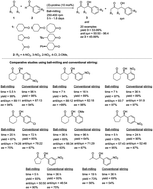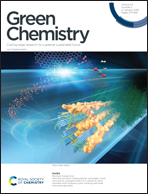Ball milling: an efficient and green approach for asymmetric organic syntheses
Abstract
Mechanochemical approaches in an organic synthesis have received increased interest because of their wide applications in green methodologies. Ball milling has been fruitfully utilized in the synthesis of various (elemental) organic scaffolds, including common drugs or drug candidates. However, the utilization of ball milling in asymmetric organic synthesis has not been adequately investigated. Thus, the aim of this review is to highlight the attractive features of the applications of mechanochemistry via ball milling in asymmetric organic syntheses in order to attract the attention of a wider section of the synthesis community.



 Please wait while we load your content...
Please wait while we load your content...